When it comes to comfort, your road bike saddle is arguably the most critical contact point on your bike. When road cycling, we spend lots of time sitting on our saddles, so finding the right one for riding style, body position, and, most importantly, one that fits you properly is of the utmost importance.
By positioning and supporting the pelvis — the control center of the pedal stroke — the saddle influences the movement and comfort of the entire body, from the knees all the way up to the neck and shoulders. Finding the ideal saddle shape can be a process of trial and error, but by reading this guide, we hope you can hone in on suitable options and find your ideal saddle more easily.
We gathered 14 road bike saddles, from well-established industry leaders to lesser-known innovators, and tested them each for several weeks of daily riding. Our experts tested each saddle in this buyer’s guide, swapping between models for months while putting in miles and assessing factors like design, shape, comfort, pressure relief, and weight.
Editor’s Note: This guide originally appeared on our sister site, Bikerumor.com, and was first published here on August 21, 2024. At the same time, we added the gravel and rough road friendly Ergon SR Allroad Pro Core Men to our selection and added more information to our Price & Value section that may be helpful when choosing the right road bike saddle.
The Best Road Bike Saddles of 2024
Specialized Power Pro With Mirror
- Measured weight: 247 g
- Width options: 143 mm, 155 mm
- Width tested: 155 mm
- Length: 240 mm
- Material: 3D printed liquid polymer upper, nylon-injected base
- Rails: Titanium, 7 x 7 mm
Pros
- Unbeatable comfort
- Proven shape
- Easy to position
Cons
- Expensive
- Heavy for the price

Bontrager Verse Comp
- Measured weight: 312 g
- Width options: 135 mm, 145 mm, 155 mm, 165 mm
- Width tested: 145 mm
- Length: 270 mm
- Materials: Nylon base, EVA foam, microfiber cover
- Rails: Chromoly 7 x 7mm
Pros
- Affordable
- Comfortable shape
- Minimal branding
- Integrated accessory mount
- Four width options
Cons
- Heavier weight
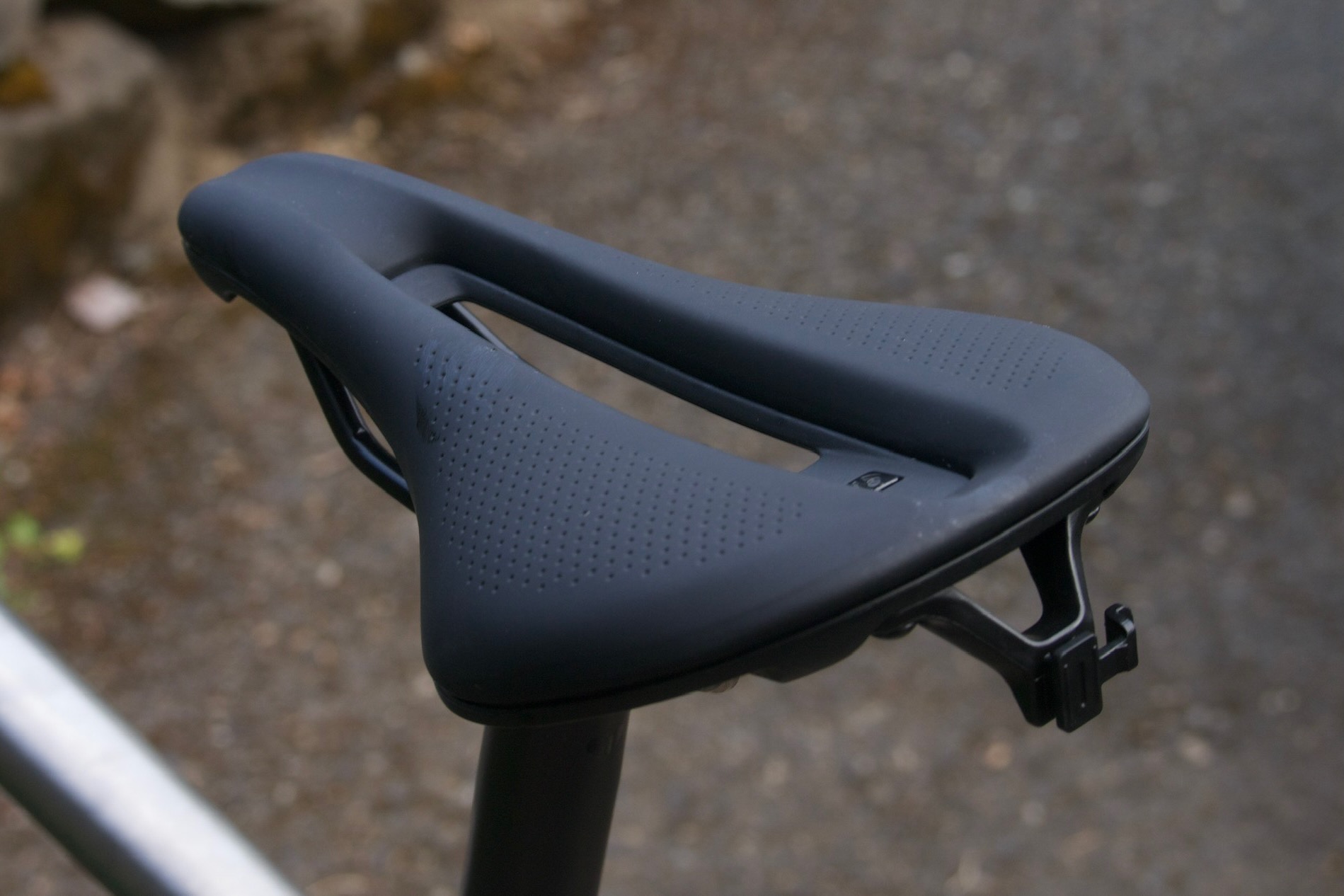
Fizik Vento Argo 00 Adaptive
- Measured weight: 188 g (150 mm, carbon rails)
- Width options: 140 mm, 150 mm
- Width tested: 150 mm
- Length: 265 mm
- Material: 3D printed liquid polymer upper, carbon fiber base
- Rails: Carbon fiber 7 x 9 mm
Pros
- Supportive and comfortable in both upright and aero positions
- Looks great on a race bike
Cons
- Very expensive
- A little heavy for the price
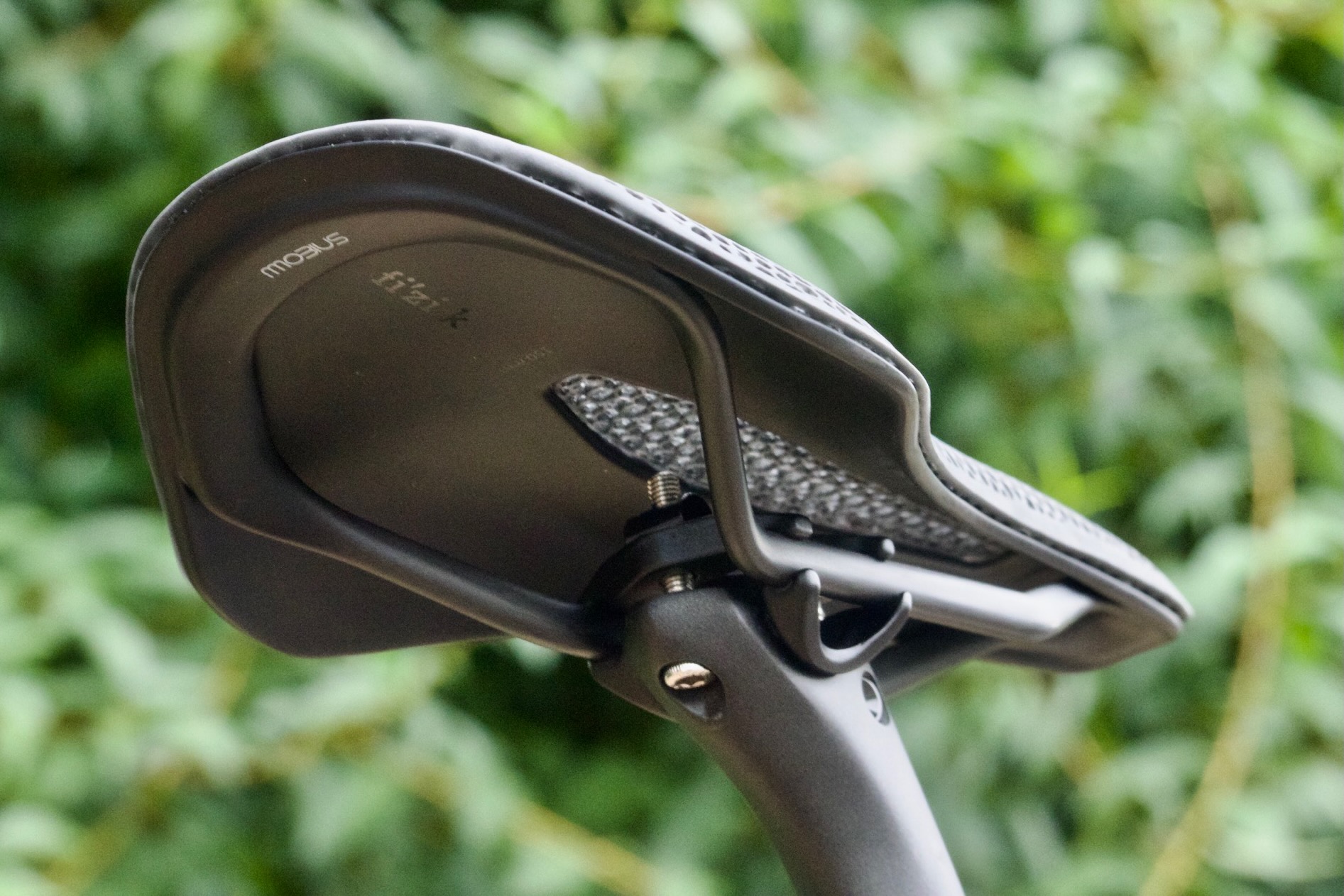
PRO Stealth Team
- Measured weight: 167 g (142 mm, carbon rails)
- Width options: 142 mm, 152 mm
- Width tested: 142 mm
- Length: 255 mm
- Material: Carbon-reinforced polymer, EVA foam, carbon rails
- Rails: Carbon fiber 7 x 9 mm
Pros
- Great support and comfort in aero riding positions
- Looks great on race bikes
- Lightweight
- Reasonable price for carbon rails and low weight
- Comes in "curved" version as well as "performance" version with INOX alloy rails
Cons
- Not great for less aggressive body positions
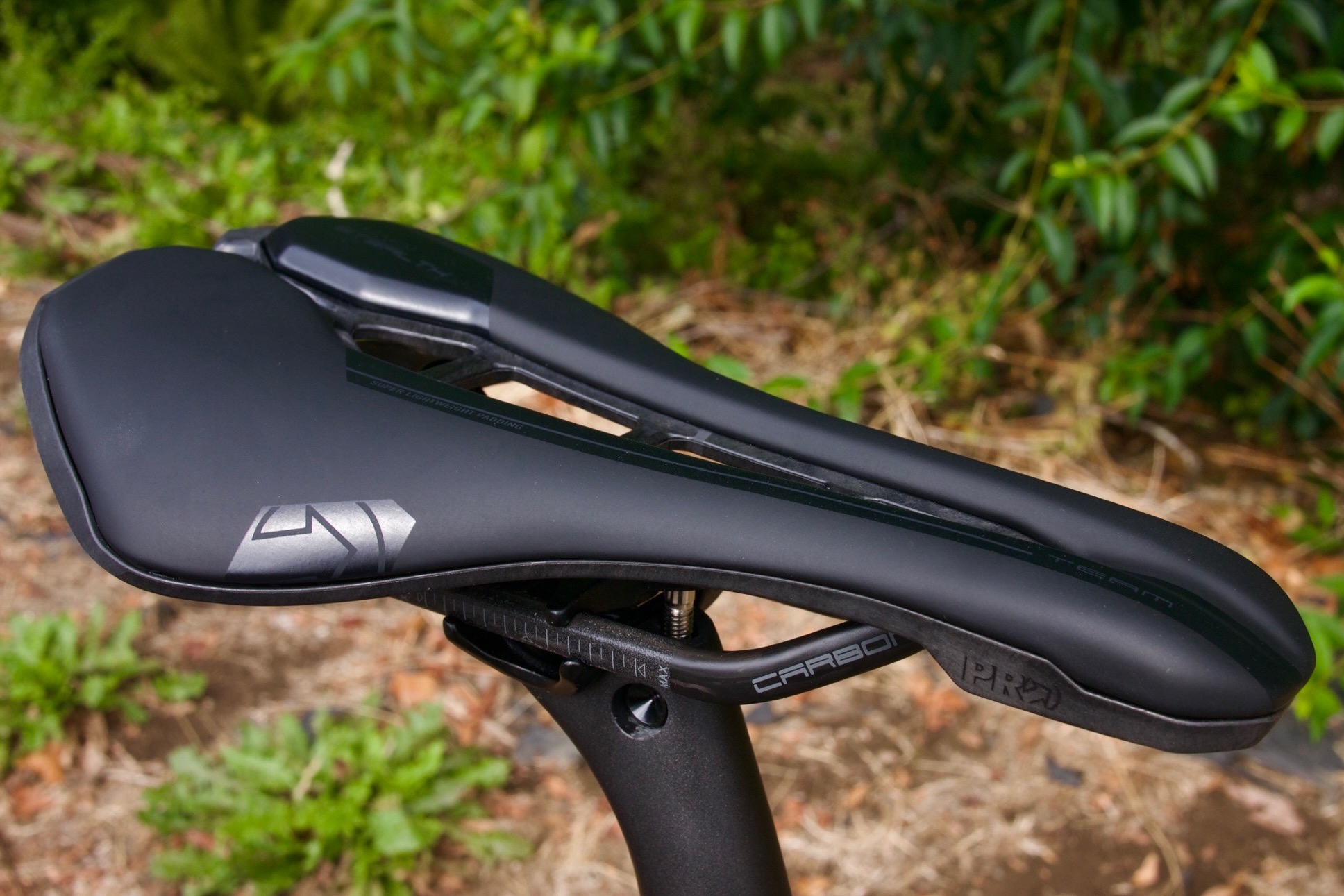
Ergon SR Allroad Core Pro Men
- Measured weight: 262 g (M/L)
- Width options: S/M: 139 mm , M/L: 152 mm
- Width Tested: M/L: 152 mm
- Length: 262 mm
- Material: Microfiber cover, carbon composite shell, orthopedic foam, and BASF Infinergy core
- Rails: TiNox (carbon and CroMo rail versions available)
Pros
- Excellent supportive cushioning
- Great for gravel and rough roads
- Two widths should work for most people's needs
- Moderate price point
Cons
- 220 lbs. max weight
- Light, but not the lightest
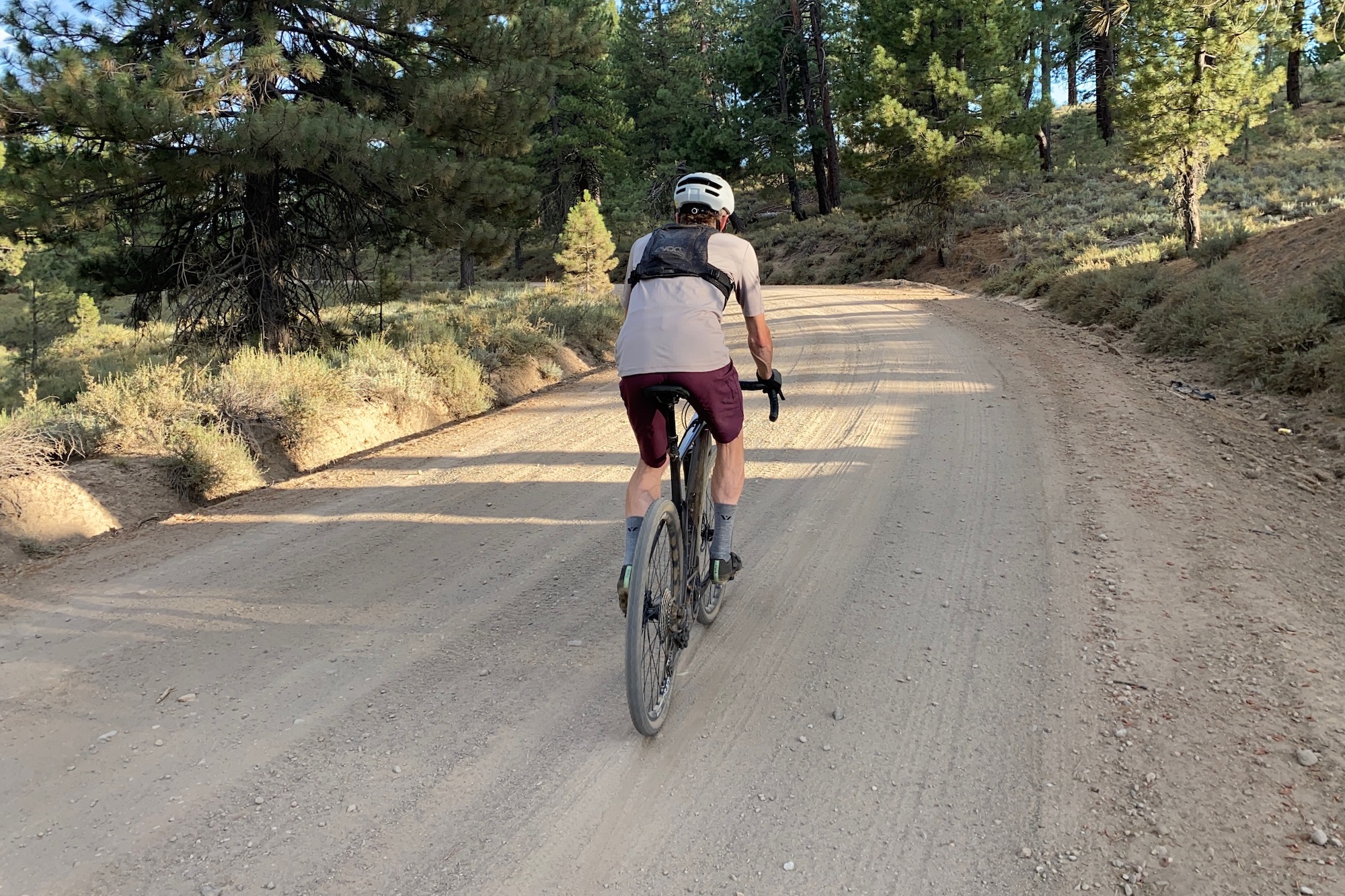
Brooks Cambium C15 Carved
- Measured weight: 435 g
- Width options: 140 mm
- Width tested: 140 mm
- Length: 283 mm
- Material: Vulcanized rubber
- Rails: Aluminum, 7 x 7 mm
Pros
- Classic looks
- Firm and comfortable
- Easy to position
- Affordable
Cons
- Heavy
- Cutout feels superfluous
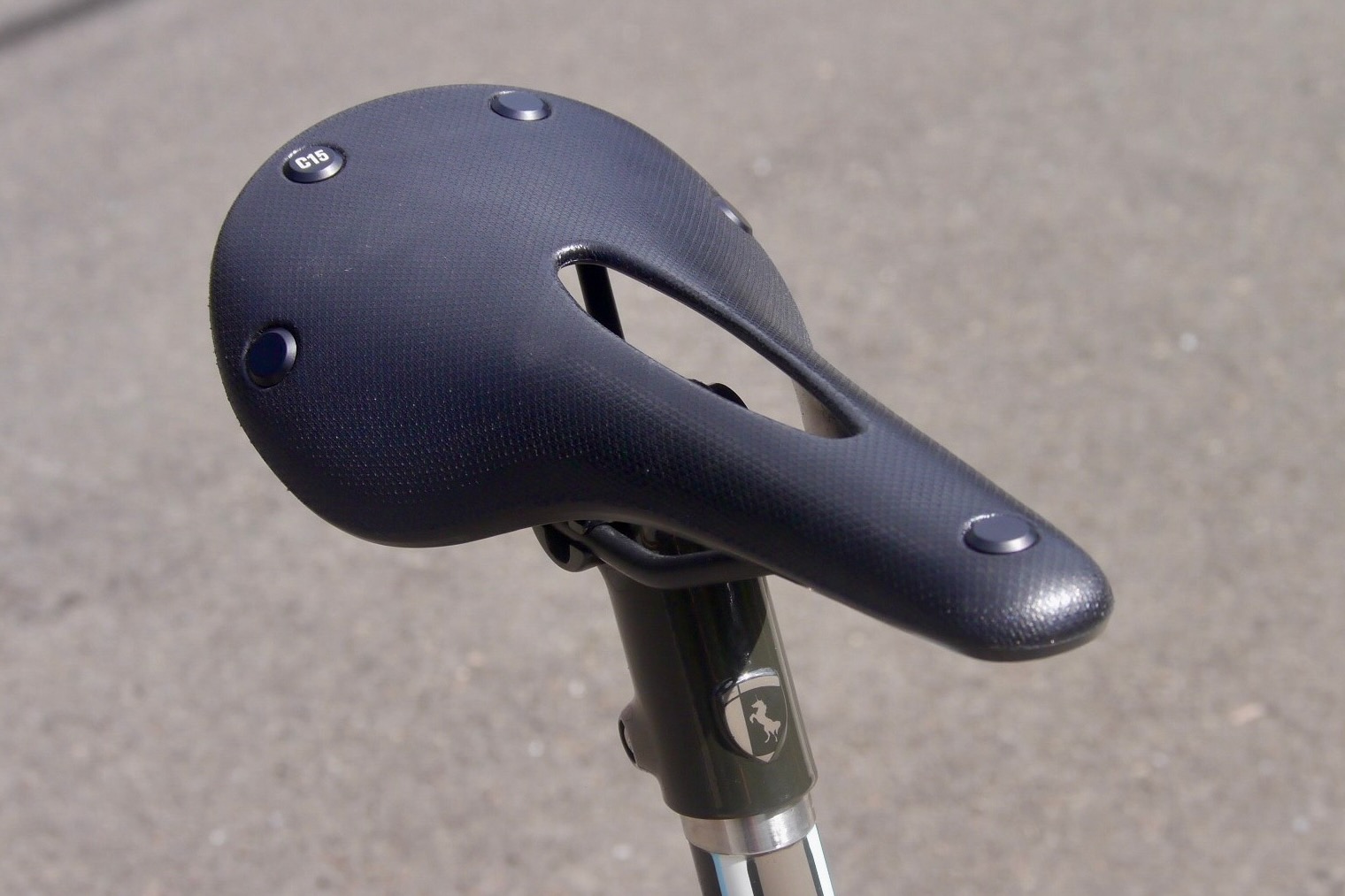
Prologo Dimension Space
- Measured weight: 225 g
- Width options: 143 mm, 153 mm
- Width tested: 153 mm
- Length: 245 mm
- Materials: Nylon base, EVA foam, microfiber cover
- Rails: Titanium alloy
Pros
- Reasonable price
- Excellent perineal relief
- Promotes an aggressive position
- Wide enough!
Cons
- Reasonable price but still not the least expensive
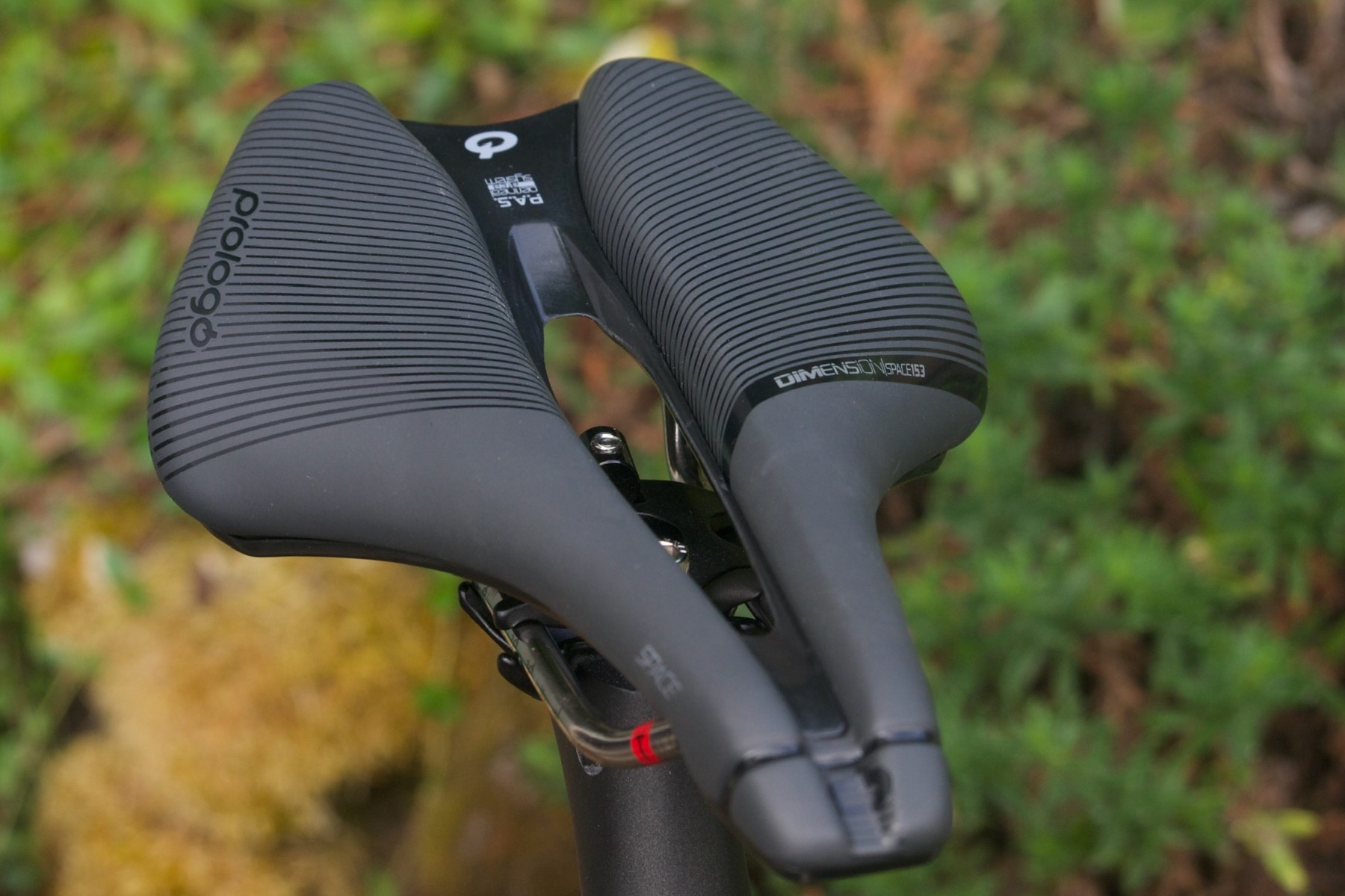
Ritchey Comp Cabrillo Saddle
- Measured Weight: 266 g
- Width Options: 146 mm
- Width tested: 146 mm
- Length: 260 mm
- Material: Nylon+glass fiber base, Air foam, microfiber cover
- Rails: Chromoly, 7×7 mm
Pros
- Affordable
- Comfortable
- Stylish
- Reasonable weight for the price
Cons
- Only available in one width
Other Saddles To Perch Yourself On
- Measured weight: 220 g
- Width options: 140 mm, 150 mm
- Width tested: 150 mm
- Length: 265 mm
- Materials: EVA foam upper, polyurethane base, Ki:um rails
- Rails: Ki:um (proprietary alloy), 7 x 7 mm
Pros
- Minimal aesthetic
- Fairly lightweight
- Reasonable price
- Generous cutout
Cons
- Edges of cutout can create pressure ridges
- Measured weight: 230 g (TiRox alloy rails)
- Width options: 147 mm (Space), 140 mm (PAS)
- Width tested: 147 mm
- Length: 250 mm
- Material: Carbon-reinforced polymer, EVA foam, TiRox alloy rails
- Rails: TiRox alloy 7 x 7 mm
Pros
- Great support and comfort in aero riding positions
- Looks great on a race bike
Cons
- Heavier weight
- Measured weight: 172 g
- Width options: 135 mm, 145 mm, 155 mm
- Width tested: 145 mm
- Length: 250 mm
- Materials: Carbon base, EVA foam, microfiber cover
- Rails: Carbon fiber 7 x 9 mm
Pros
- Lightweight
- Minimal branding
- Firm but comfortable
- Blendr accessory mount
Cons
- Expensive
- Measured weight: 292 g
- Width options: 138 mm
- Width tested: 138 mm
- Length: 274 mm
- Materials: Leather/microfiber upper, nylon base, Ti rails
- Rails: Titanium 7 x 7mm
Pros
- Excellent build quality
- Remarkable fore/aft pelvic stability
Cons
- Heavier weight
- Polarizing aesthetics
- Narrow width may not work for everyone
- Measured weight: 168 g
- Width options: 130 mm, 145 mm
- Width tested: 145 mm
- Length: 248 mm
- Materials: EVA foam upper, Fibra Tek cover, Ti rails, Nylon Shell
- Rails: TI 316, 7 x 7 mm
Pros
- Light with metallic rails
- Excellent build quality
Cons
- Requires perfect setup
- Hard to find the sweet spot
- Expensive
- Measured weight: 203 g
- Width options: 143 mm
- Width tested: 143 mm
- Length: 244 mm
- Materials: Ti Rails, EVA foam upper, polymer base
- Rails: Titanium 7 x 7 mm
Pros
- Comfortable shape
- Minimal branding
Cons
- Pricey
- Build quality could be better
Road Bike Saddle Comparison Chart
| Saddle Model | Price | Weight | Width Options | Length | Rails |
|---|---|---|---|---|---|
| Specialized Power Pro with Mirror | $325 | 247 grams | 143 mm, 155 mm | 240 mm | Titanium 7 x 7 mm |
| Bontrager Verse Comp | $100 | 312 grams | 135 mm, 145 mm, 155 mm, 165 mm | 270 mm | Chromoly 7 x 7 mm |
| Fizik Vento Argo 00 Adaptive | $400 | 188 grams | 140 mm, 150 mm | 265 mm | Carbon 7 x 9 mm |
| PRO Stealth Team | $220 | 161 grams | 142 mm, 152 mm | 255 mm | Carbon 7 x 9 mm |
| Ergon SR Allroad Core Pro Men | $160 | 262 grams | 139 mm, 152 mm | 262 mm | TiNox 7 x 7 mm |
| Brooks Cambium C15 Carved | $130 | 435 grams | 140 mm | 283 mm | Steel 7 x 7 mm |
| Prologo Dimension Space | $139 | 225 grams | 143 mm, 153 mm | 245 mm | TiRox 7 x 7 mm |
| Ritchey Comp Cabrillo Saddle | $60 | 266 grams | 146 mm | 260 mm | Chromoly 7 x 7 mm |
| Fizik Vento Argo R3 | $160 | 220 grams | 140 mm, 150 mm | 265 mm | Kium 7 x 7 mm |
| Prologo Scratch M5 Space | $139 | 230 grams | 140 mm, 147 mm | 250 mm | TiRox 7 x 7 mm |
| Trek RSL Bike Saddle | $315 | 172 grams | 135 mm, 145 mm, 155 mm | 250 mm | Carbon 7 x 10 mm |
| Selle SMP Dynamic | $269 | 292 grams | 138 mm | 274 mm | Titanium 7 x 7 mm |
| Selle Italia SLR Boost TI 316 Superflow | $320 | 168 grams | 130 mm, 145 mm | 248 mm | Titanium 7 x 7 mm |
| Velo Prevail TT | $198 | 203 grams | 143 mm | 244 mm | Titanium 7 x 7 mm |
How We Tested the Best Road Bike Saddles
At GearJunkie, we take pride in testing, reviewing, and reporting on the best outdoor gear. Our crew of passionate outdoors people includes numerous hardcore cyclists who spend lots of time on the bike, whether testing new bikes, components, accessories, or apparel, training for the next race, or riding just for the fun of it.
All that time spent in the saddle has taught us the importance of having the right tools for the job, from finding the best road bike tires to getting the right saddle so we can be comfortable for hours on end. We also know just how tough it can be to find the perfect one.
For our road bike saddle buyer’s guide, we tapped frequent contributor and road cycling expert Bennett Shane to test and compare the 14 models included in this review. Bennett has been road cycling for over two decades and, in that time, has spanned the spectrum of riding disciplines.
Though he hasn’t lined up for a race in a few years, he spent quite a bit of time rubbing elbows in crits and pelotons. These days he prefers to put in big miles on epic rides throughout the Pacific Northwest near his home base near Portland, OR.
On top of his cycling experience, Bennett spent years working in the cycling industry for several prominent brands. This experience has given him unique insight into the product lifecycle as well as the design, materials, and construction of products spanning from apparel to components.
When considered together, his experience in the industry and as a rider/consumer gives him an understanding of products from the inside out, and he has developed a keen ability to discern the performance differences in the products he tests. Bennett has applied his testing expertise to several other categories, including protective road bike helmets, the best road bike shoes, and cycling bib shorts.
After researching the best and most popular road bike saddles on the market, we rounded up 14 models for side-by-side testing and comparison. After weighing each model for comparison to the manufacturer’s specs, they were mounted up on Bennett’s small fleet of boutique road bikes and taken for numerous rides to get a feel for their shape, comfort, padding, anatomical relief, and, most importantly, how they stack up against each other. After thousands of miles of testing, we honed in our favorite models and those that excel in specific ways compared to the rest.
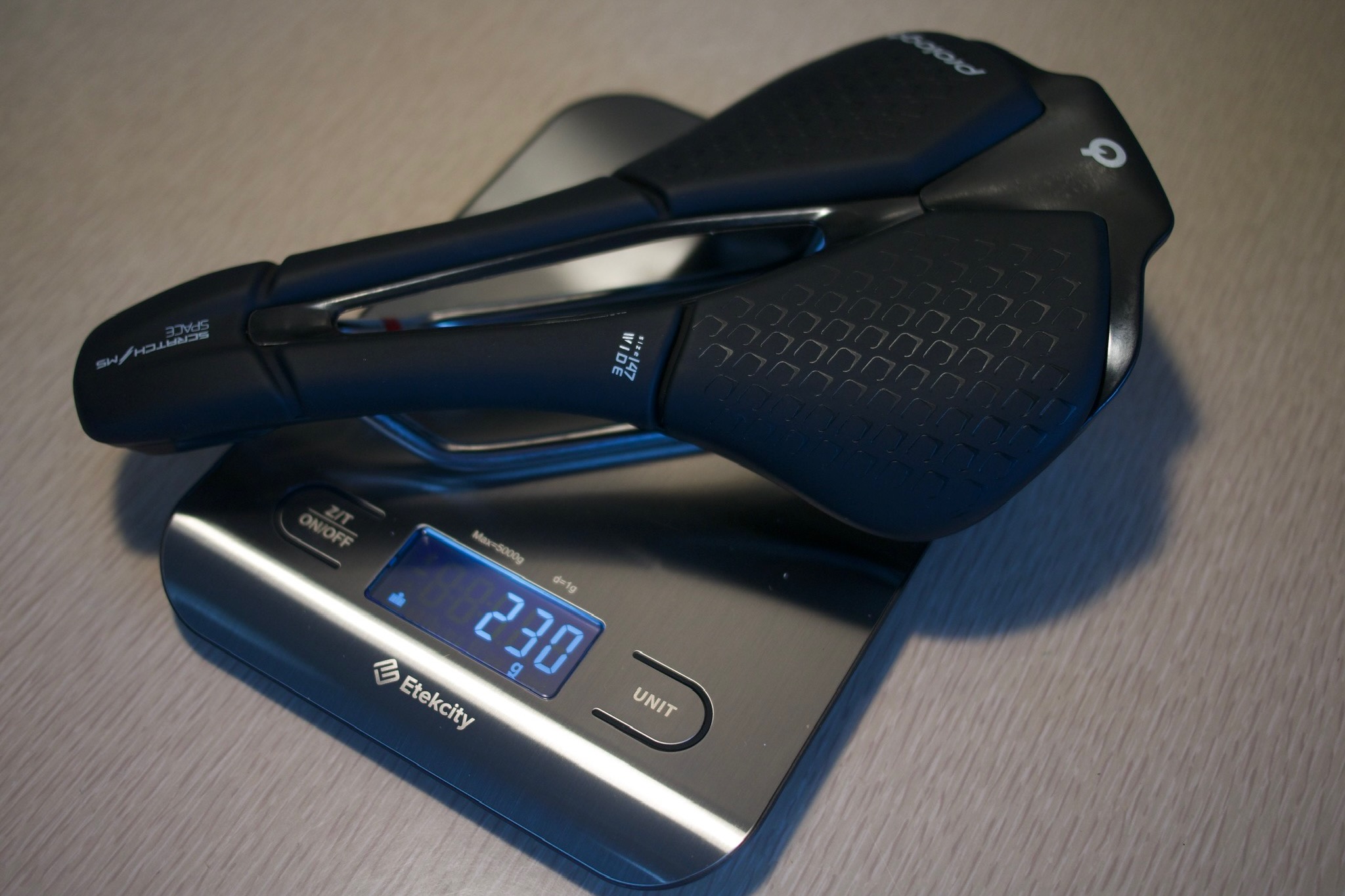
Buyer’s Guide: How to Choose a Road Bike Saddle
Whether you’re a fair-weather cyclist or riding the indoor trainer all winter, finding a good road bike saddle is critical for your comfort on the bike. With so many models, sizes, materials, and designs to choose from, finding the right saddle isn’t the most straightforward thing in the world. There’s a lot to consider when choosing a new saddle, so here we break down the most important factors to help you make a more informed purchase decision.
What Type of Riding Do You Do?
The type of riding you do, and most importantly, your body position while riding, plays a major role in the saddle that will work best for you. Racers and aggressive riders tend to lean forward more, which results in more forward pelvic rotation. Often, riders in these powerful positions tend to prefer saddles with short lengths, flat side-to-side profiles, flat tip-to-tail profiles, and effective anatomical relief in the form of a cutout or channel.
Riders who ride more casually or simply prefer a more relaxed body position for endurance riding may benefit from a somewhat rounded side-to-side profile and a slightly cradled tip-to-tail profile that provides more support. That said, there are no hard and fast rules. From the indoor pain cave to mountain passes, the saddle that works best for you is the one that fits you well and provides long-term comfort.
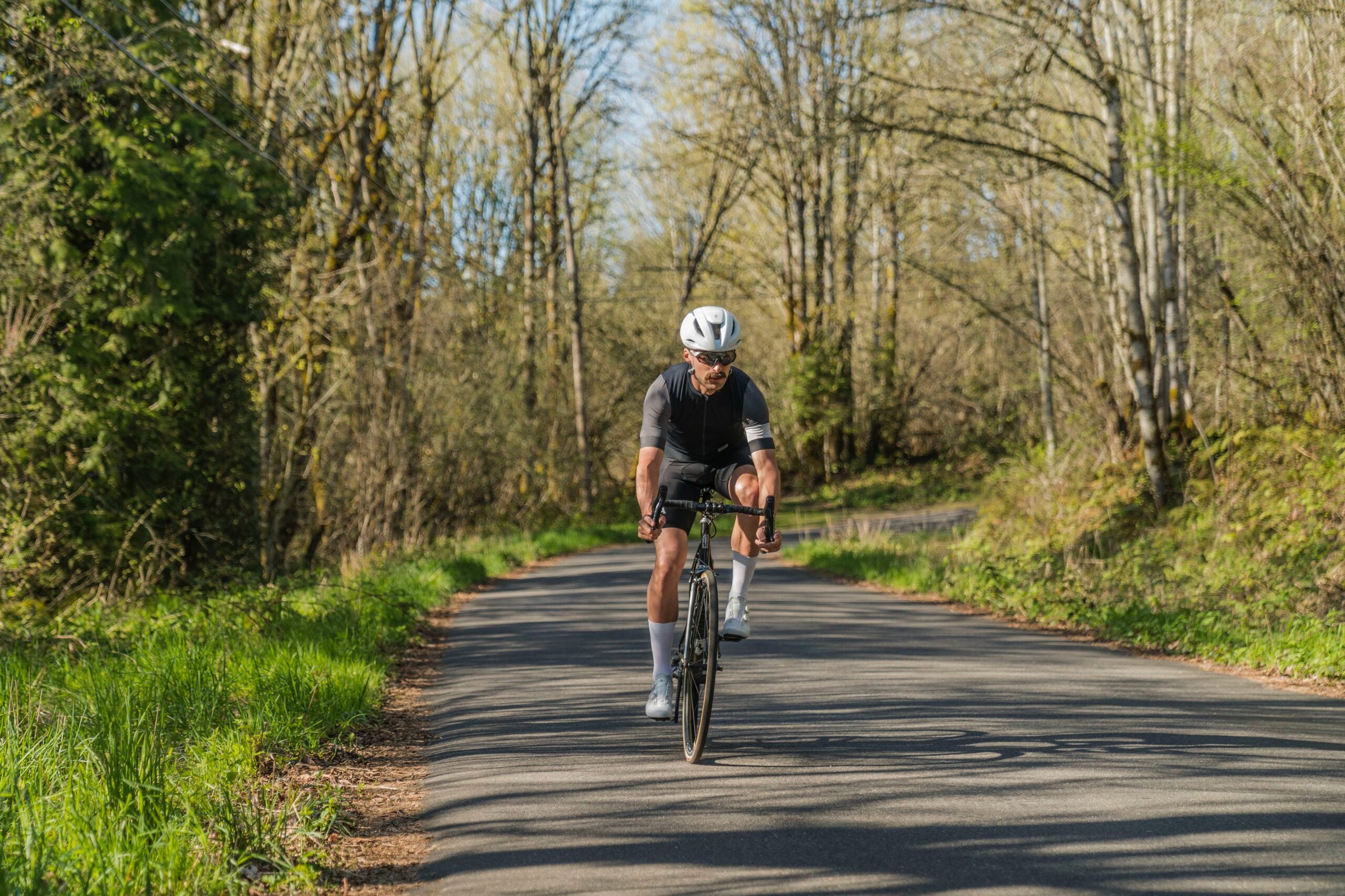
Width and Sizing
Our bodies are all different, so finding the correct saddle width to suit your anatomy is one of the most important things you can do for comfort. Many people don’t realize that road bike saddles come in varying widths to accommodate different-sized and shaped bodies to get an ideal fit. The distance between our sit bones, in particular, is very important to consider as that is where the majority of our weight rests while seated.
A saddle that is too narrow doesn’t provide enough support for the sit bones and can result in excessive pressure on the perineum or pubic bone arch and sensitive soft tissues. Likewise, a saddle that is too wide can cause discomfort by pushing outward on the hips or digging into your inner thighs and negatively impacting the pedal stroke.
Saddles range in width from around 125 mm up to 160 mm, generally speaking. Many saddles, like the Bontrager Verse Comp, for example, are offered in several different width options across this spectrum, while others are available in only a single width. While many riders associate narrower sizes with reduced friction, an appropriately sized saddle can actually reduce friction and many other issues by promoting greater pelvic stability.
Thankfully, you don’t have to guess your ideal saddle width. Most bike shops offer some type of measurement of the sit bones, which will tell you which saddle width is ideal for your anatomy. It is also possible to take this measurement at home, and you can easily find instructions on how to do so online. Many shops also have test saddles, so you can try them before you buy to make sure they work for you. Several brands also offer comfort guarantees, so you can try a saddle risk-free and send it back if it isn’t the right fit.
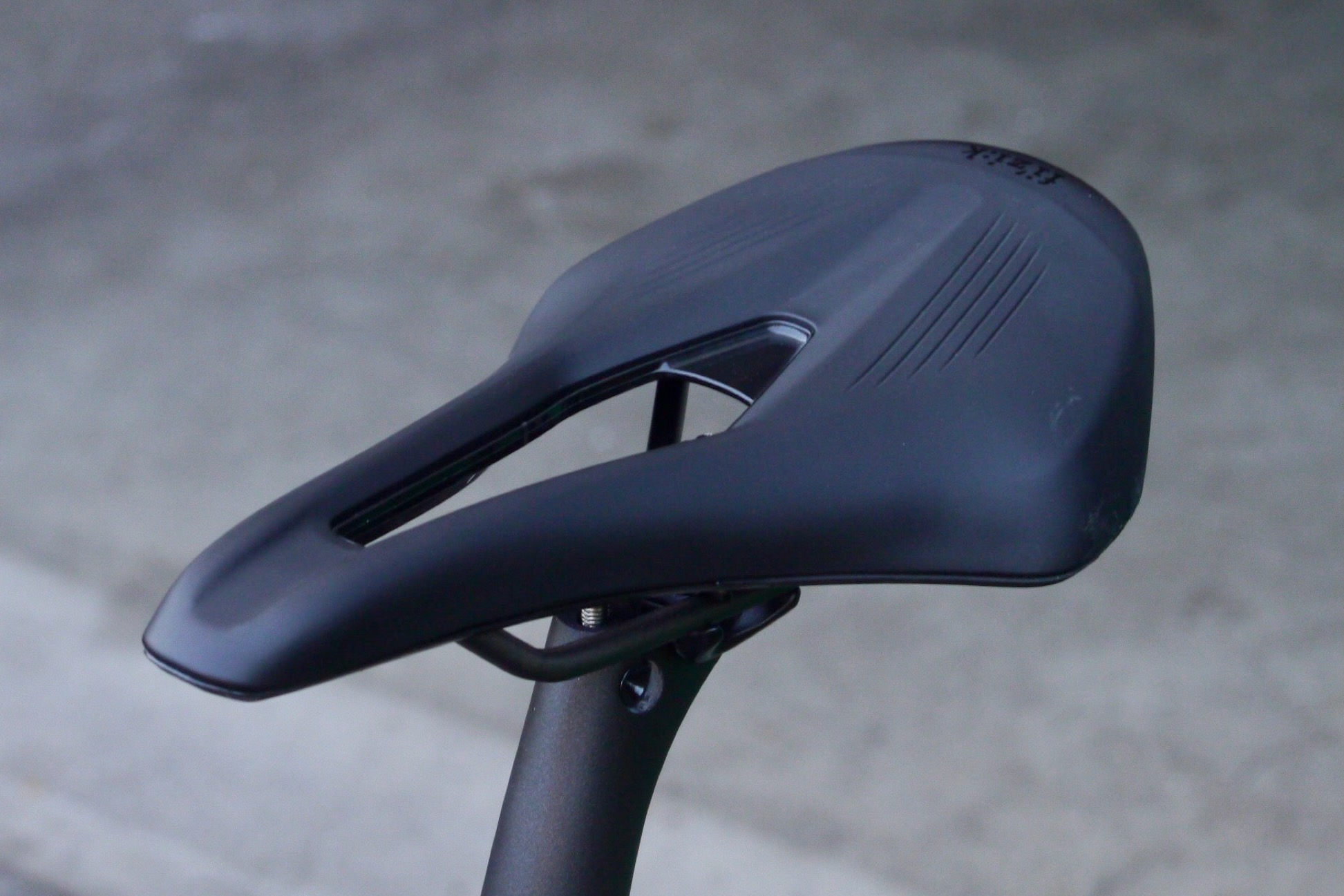
Anatomical Relief
While road riding, we spend lots of time seated and pedaling, with most of our weight resting on and around relatively sensitive parts of our anatomy. Almost every saddle being developed now will feature a central cutout or pressure relief channel of some sort. These cutouts or channels are intended to take pressure off of the perineal area which can help to increase comfort, maintain blood flow, and reduce the chances of numbness, irritation, and other issues that may arise.
The idea is pretty simple, but the execution varies greatly from brand to brand and saddle to saddle. Some cutouts feel like little more than decoration, while others deliver legitimate pressure relief hour after hour of riding. Along with a good, well-fitting saddle, a quality pair of cycling bib shorts is an essential piece of kit that can enhance comfort over the course of your rides.
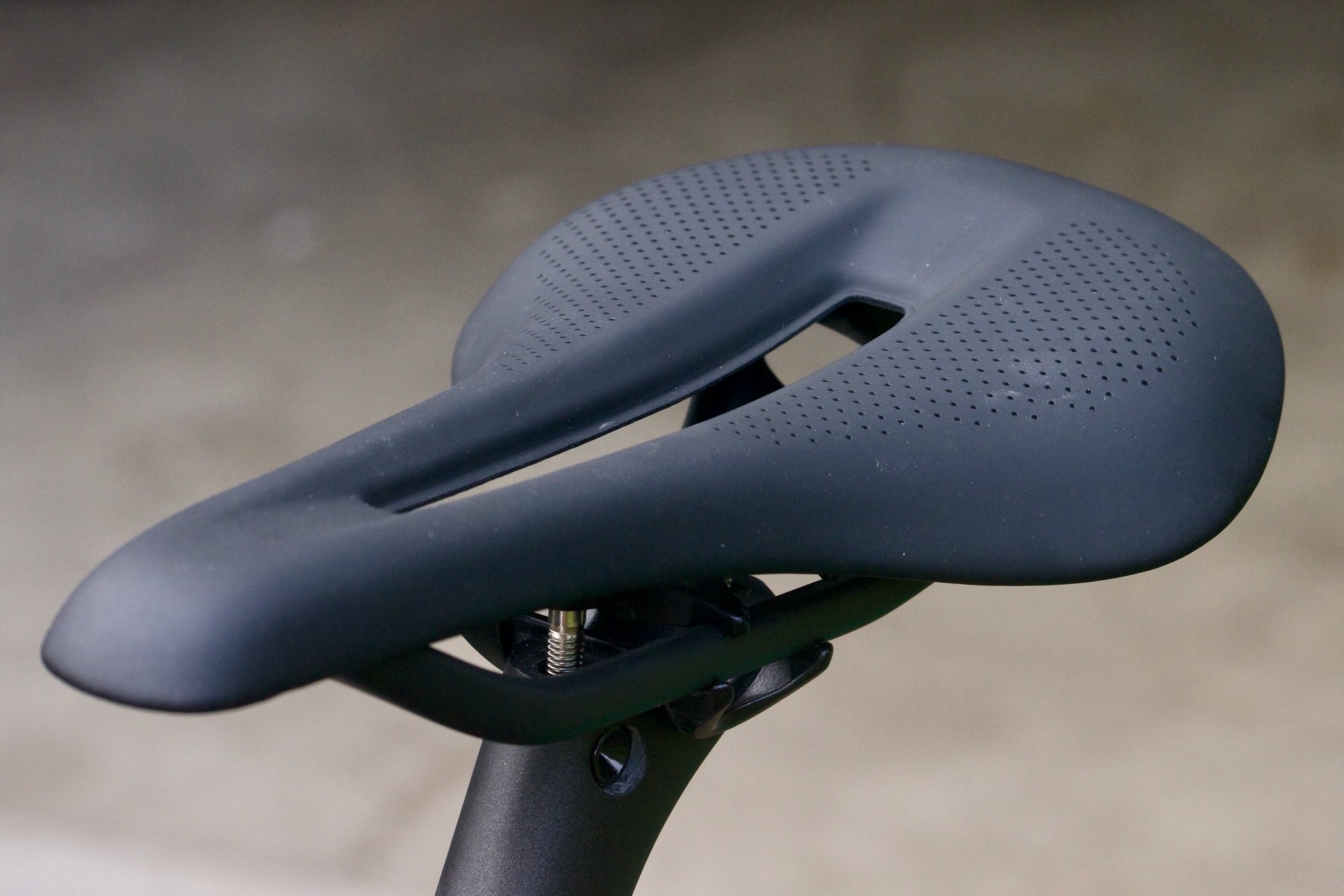
Saddle Profile: Side to Side
A saddle’s profile — the shape of the saddle from side to side across its widest part — is a key factor in comfort. Much like the width of a saddle, different profile shapes, typically flat or curved, may work better with people’s unique anatomies and different riding styles. Profiles vary from brand to brand and model to model, and some saddles, like the PRO Stealth Team, are even offered in both a regular and a curved version.
Traditionally, saddle profiles were more rounded, as it was thought that a gradually curving profile would be more accommodating to the sensitive tissue around the pelvis. While this may still work for some riders, profiles have trended flatter in recent times. Flatter profiles promise to enhance lateral stability of the pelvis, which in turn takes pressure off the lower back and encourages activation of the gluteal muscles during the pedal stroke.
Another important benefit of a flat profile saddle is that it allows for more effective cutout designs. Cutouts, in combination with a flat profile, remove significant pressure from soft tissue and encourage a more even distribution of pressure across a wider section of the pelvis and surrounding muscles and soft tissue.
Also, it is important to bear in mind that a saddle’s profile can play a role in the effective width and where your sit bones rest on the saddle. A saddle that has a more rounded profile will effectively be narrower than its measured total width, while a flatter profile will be much closer to the actual width.
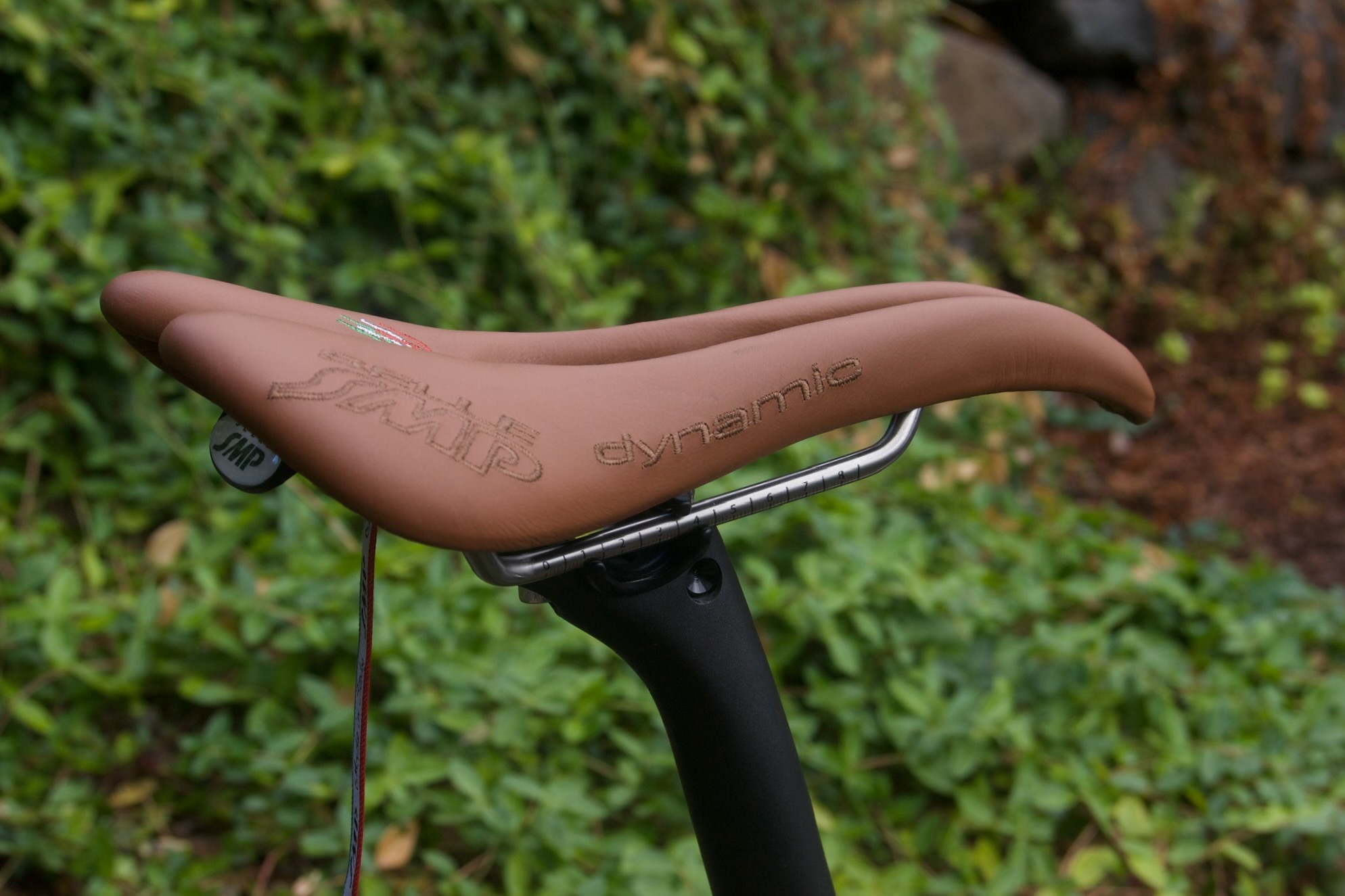
Saddle Profile: Tip to Tail
Another factor to consider is the profile of a saddle from tip to tail. For the most part, saddles are either fairly flat or have a slightly cradled shape. In general, a flat tip-to-tail profile is better suited to more aggressive, powerful, or aerodynamic riding positions with more forward pelvic rotation. Racers, powerful riders, and those who tend to move around the saddle typically gravitate towards a saddle with a flat profile.
Saddles with a cradled profile typically lend themselves better to more neutral or relaxed body positions with less forward pelvic rotation. If you mostly ride from the hoods or the tops or go on long endurance rides, a saddle with a slightly cradled tip-to-tail profile may be the best option for comfort and support. An example of a cradled saddle is the Selle SMP Dynamic which has a relatively dramatic curved shape that locks the rider into the sweet spot for static seated pedaling.
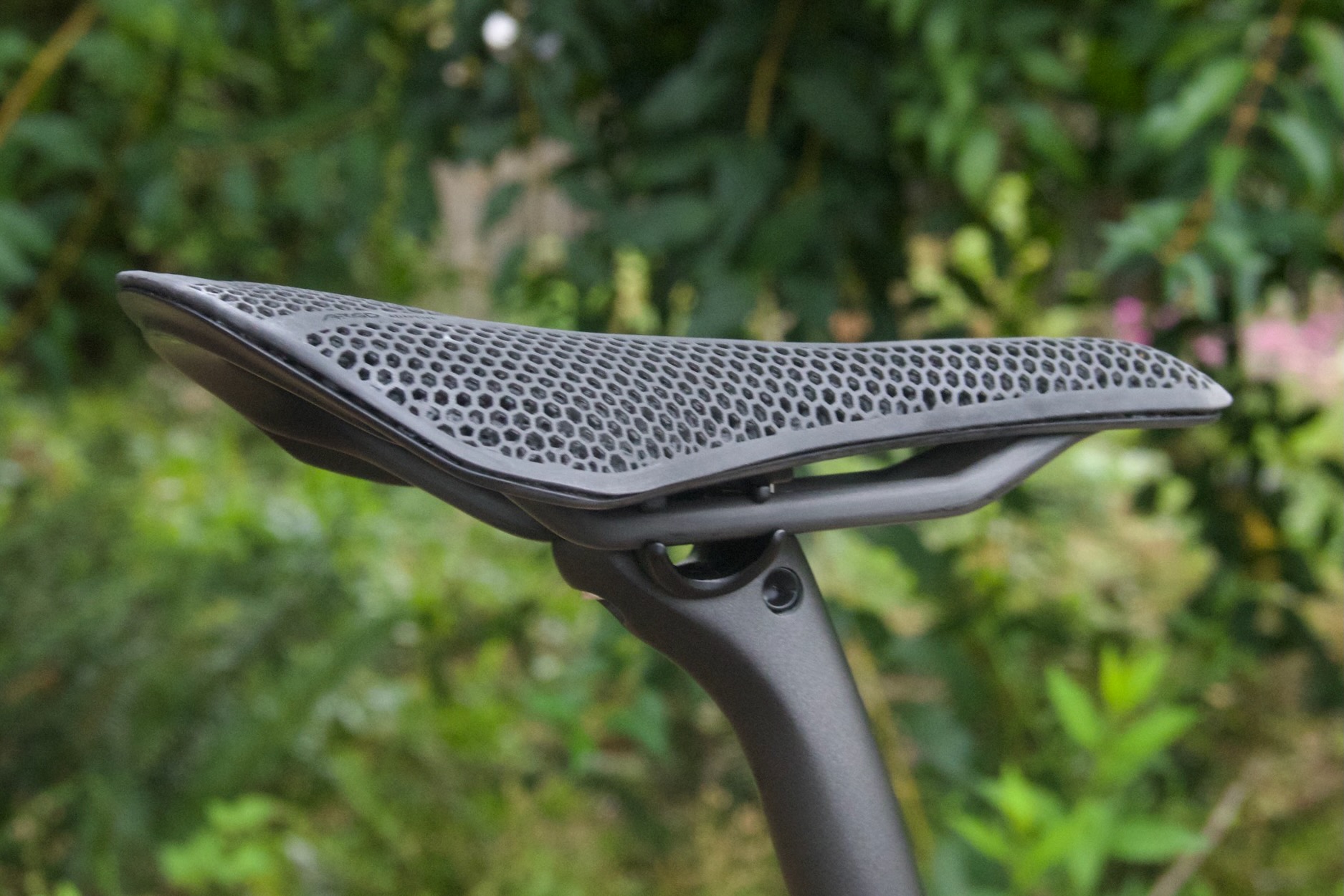
Rail Material
Saddles are often offered in several versions, with one of the main differentiators being the material used for the rails. Rail material plays a large role in overall saddle weight and price with lighter and more exotic materials commanding a higher price. The most common types of rails are steel, Chromoly, titanium, and carbon fiber (in order from heaviest/least expensive to lightest/most expensive). As an example, the Ergon SR Allroad Core comes in three variants. The Core Pro ($160) has TiNox rails, the Core Carbon ($200) has carbon rails, and the Core Comp ($140) has CroMo rails.
Another factor to consider with rail materials is their size. Most metal rails are round and have standard 7 x 7 mm dimensions that will work on virtually any seatpost. Carbon fiber rails allow saddles to cut upwards of 100 grams of weight but usually have 7 x 9 mm rails. Carbon fiber rails may not be compatible with all seatpost clamps (or saddle bags, for that matter), or you may need to get a special adapter to make them fit.
If purchasing a saddle with carbon fiber rails, we recommend making sure that your seatpost is compatible. Carbon rails can also make saddles feel stiffer, which may or may not be desirable. Titanium rails achieve decent weight savings compared to chromoly or steel rails, will work on virtually any seatpost, and tend to give the saddle a bit more forgiving feel than carbon fiber rails.

3D Printing
3D printed saddles represent a significant step forward in saddle technology by shifting away from traditional design, which sandwiches foam between a plastic or carbon fiber base and a synthetic cover. Instead of bonding several layers, 3D-printed saddles are made of a latticework of liquid polymer that flexes precisely to the shape and movement of each rider’s unique anatomy and pedaling motion.
Not surprisingly, two 3D-printed saddles received top honors among our test group, the Specialized Power Pro with Mirror and the Fizik Vento Argo 00 Adaptive. 3D-printed saddles are examples of true innovation in the cycling industry, and while they are more expensive, we feel they are worth the investment. In addition to the two models we tested, there are a number of other 3D-printed models from Specialized, Fizik, Selle Italia, and others.

Adjusting Your Saddle
Some fine-tuning of saddle position is almost always necessary to achieve the proper position and optimize comfort for your anatomy and riding style. Adjustments include tilting the nose up and down, sliding the saddle fore and aft (within the adjustment range of the rails), and adjusting the height by telescoping the seatpost in the bike frame.
A great place to start is with the saddle clamped in the middle of its rails, and perfectly level, then make adjustments as needed. You can use a spirit level or eyeball it with a ruler. Keep in mind that not all saddles have the same amount of stack (the vertical distance between the rails and the top of the saddle), so if you change saddles, you may also need to adjust the saddle height slightly. If you’re unsure of how to adjust your bike saddle, a professional bike fit can be a great way to dial everything in on your ride.
Women’s Saddles
All but one of the saddles we tested are unisex and are used by both male and female riders. There are a number of women-specific saddles on the market, however, that are designed to work better for female riders. While many female riders get along fine with the dimensions, shapes, and profiles of unisex saddles, some ladies may benefit from a women-specific model.
While they look essentially the same as unisex models, many women-specific saddles are offered in wider widths to accommodate wider sit bones, and some may also have larger cutouts to enhance comfort for the female anatomy.

Price & Value
The cost of road bike saddles varies wildly from less than $60 all the way up to $400 or more. With such a huge range of prices, it’s fair to wonder what you get by spending more. Regardless of price, the most important thing is to get a saddle that fits your anatomy and suits your style of riding.
Budget
Road bike saddles that cost around $100 or less are generally considered to be in the budget category. While the general shapes and comfort are about the same as their more expensive counterparts, budget-oriented saddles are typically made from less exotic materials and weigh a bit more.
You won’t see much carbon fiber in this price range. Instead, most brands use steel or chromoly for rails and plastic for the shells. While they might feel roughly the same in use, you typically trade money saved for weight gained.
A good example is the Bontrager Verse Comp which retails for $100 and provides a nearly identical level of comfort to the $315 Trek RSL, although it weighs 140 g more. It’s still a great saddle, regardless. And, if you’re operating on an even tighter budget, the Ritchey Comp Cabrillo gets the job done for $60. So, unless weight is your highest priority, you don’t need to shell out the big bucks for the fanciest models on the market.
Mid-Tier
As we climb in price, mid-tier road bike saddles occupy the $150-250 range. Here we start to see fancier materials like titanium and carbon fiber rails, carbon or composite shells and designs catering to more specific riding styles and needs. Race-specific saddles like the PRO Stealth Team ($220), for example, are geared towards high-intensity riding and a more aggressive body position.
Other saddles in this price range bring unique shock-absorbing technology into the equation, like the Ergon SR Allroad Core Pro Men ($160). By using a unique material, this saddle does wonders to dampen vibration while remaining supportive and stable under hard pedaling efforts.
Premium
Spending top dollar — $250 and up — on a saddle typically gets you fancier materials like carbon fiber, more advanced construction methods like 3D printing, and typically a significant reduction in weight compared to the least expensive options.
Here, we find the latest technology in saddles, like the Fizik Vento Argo 00 Adaptive ($400) and the Specialized Power Pro with Mirror ($325), both of which are 3D-printed. Other times, it’s all about the weight, as is the case with the Trek RSL ($315), which weighs 140 g less than its less expensive sibling, the Bontrager Verse Comp.
Frequently Asked Questions
When we talk about saddle size, that is mostly related to saddle width. Road bike saddles come in a range of widths, from approximately 125 mm to 160 mm (give or take). If you already have a saddle that works well for you, it may be as simple as getting one that is roughly the same width.
That said, getting your sit bones measured is the best way to zero in on the correct size to suit your anatomy. Most shops have sit bone measurement tools, and often they have test saddles that you can try out.
Saddle fit and comfort are highly subjective and depend on many factors. Everyone’s body is different, so the most comfortable saddle for you may be completely different than for someone else. Finding a saddle that is the right width and profile are two of the most important aspects when it comes to comfort. Adjusting it properly will also play a big role.
Whenever possible, trying a saddle before you buy is the best way to ensure it will work for you. Or, if buying online, saddles with a comfort guarantee are a low-risk way to find your perfect match.
It really all comes down to the materials and construction methods. Saddles with carbon fiber rails, bases, and 3D-printed tops are expensive to produce and therefore cost more than models made with less exotic materials and simpler constructions.
Like many things in cycling, spending more also equates to a reduction in weight which may be important to many riders and racers. Assuming you’re okay with carting around 100-150 extra grams, there are plenty of comfortable saddles that are a fraction of the price of the top-of-the-line models.
Full cutouts or channels are common on most road bike saddles these days. While many people can and do ride saddles without them, most people can benefit from having this feature. Cutouts and channels are designed to keep pressure off the perineum in men or pubic bone arch in women with the goal of enhancing long-term comfort, increasing blood flow, and preventing numbness and pressure-related issues that may arise.
This is of particular importance for riders who spend lots of time in more aggressive riding positions with the upper body hinged further forward, as this rotates the pelvis forward and can result in more pressure on sensitive soft tissues.
Proper saddle positioning is critical for comfort and performance, and dialing it in perfectly is often a process of trial and error. While many people can find comfort with their saddle positioned perfectly flat and in the middle of the rails, others may need to shift the angle, height, and fore-aft position to optimize it for their body or riding style.
Saddle height is generally fairly straightforward and is necessary to achieve proper leg extension during the pedal stroke. Sliding the saddle fore and aft on the rails can lengthen and shorten your reach to the handlebar. Adjusting the tilt angle of the saddle can help to optimize its position for the right amount of support for your body position while riding. When in doubt, consulting with a skilled bike fitter is a great option to get your bike dialed in.
Related Content

The Best Road Bike Shoes of 2024
We tested 14 of the best road bike shoes on the market to help you find the right pair for your needs and budget.

The Best Cycling Bibs of 2025
We tested 14 of the best men’s cycling bibs on the market to help you find the right pair for your perfect ride.





















